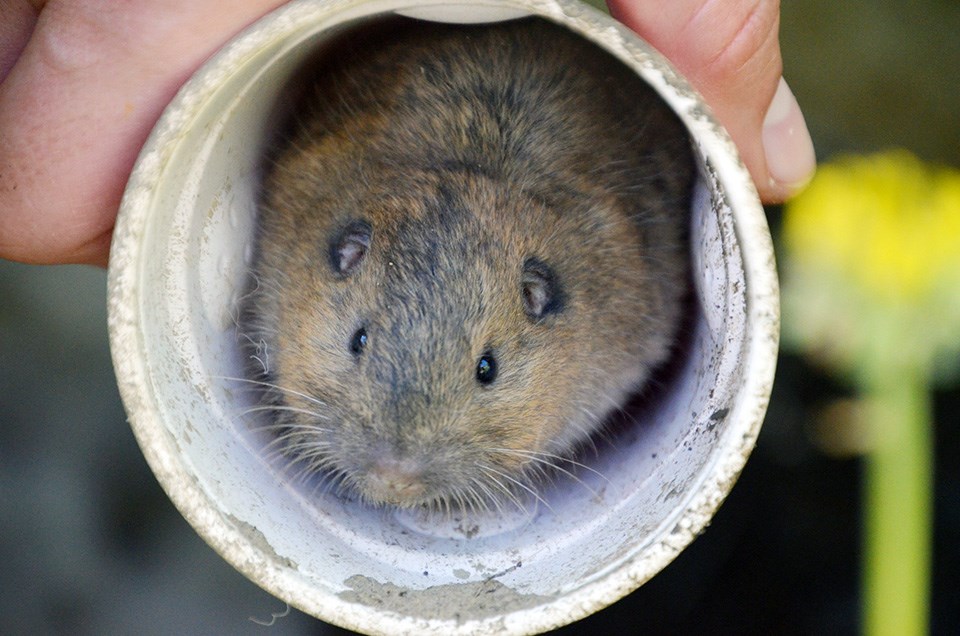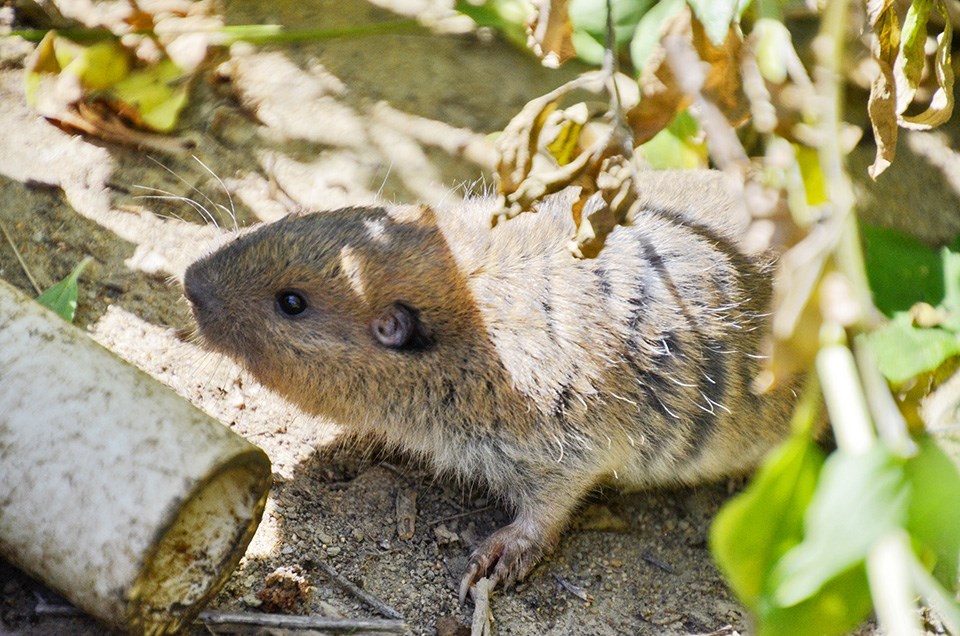Last updated: June 22, 2017
Article
A New Species for Cabrillo National Monument

NPS
June 2017 - Each month on a Monday, a team of Cabrillo National Monument biologists and volunteers head out to the field to uncover over 100 five-gallon buckets. Located throughout the park and adjacent US Navy land, the buckets have been sunk into the earth, their rims even with the ground. The buckets serve as pitfall traps, arranged in groups of seven, and connected by low drift fencing. They work by catching small animals that fall in while trying to go around the fencing. The team, led by Cabrillo biologist Stephanie Root, spends the rest of the week checking each trap daily. They identify, measure, and release any captured critters before covering the buckets again until the next month.
Most often, the team finds common lizards such as western fence lizards and side-blotched lizards in the traps. They also find and record a lot of small mammals such as desert shrews and western harvest mice. Sometimes, a bucket will contain a snake or a salamander.

NPS
This spring has been more exciting than usual because of the greater diversity of species captured. During one day of trap-checking, the team recorded a potentially record-breaking 20 individual lizards! Among the less common species captured have been a ring-necked snake and a legless lizard. Years sometimes pass without these species turning up at all.
The most exciting capture of the season, however, was a species that had never been recorded in more than 20 years of pitfall trapping. At first, biologists weren’t sure what the furry rodent was. After a little sleuthing, and multiple ID confirmations from other biologists on iNaturalist, they had their answer. The cute critter was a Botta’s pocket gopher (Thomomys bottae). Although never known from Cabrillo, the San Diego Natural History Museum does have historical records of the gopher on adjacent US Navy land.

NPS / Warren Tam
Since Botta’s pocket gopher has not been seen in recent decades, why now? It could be due to the massive rains San Diego had this winter. Rain increases food supplies and thus activity for a variety of wildlife. This species is also difficult to capture in pitfall traps because it spends much of its life underground.
Though sometimes viewed as a pest, pocket gophers are beneficial to the environment because they aerate soils up to almost a foot deep. Unlike many other gophers, Botta’s pocket gophers can dig with their teeth, which don’t wear down as quickly as claws can.
Amazing as it is to discover a new species for the park via pitfall trap, that is not the larger goal biologists had in mind. So what are the traps for? They are actually part of the Mediterranean Coast Network’s effort to track the 12 species of reptiles and amphibians found in Cabrillo and throughout the Point Loma Peninsula. Historically, the area was home to 19 reptiles, but seven have already disappeared for unknown reasons. Habitat fragmentation is one possible culprit. For wildlife the peninsula is now effectively an island, cut off from the mainland by a sea of development. Such isolation can become problematic in a number of ways. Other factors such as invasive species and climate change could also harm native species. Long-term monitoring can alert biologists if these or other factors might be taking a toll on park populations. Knowing when species or ecosystems are in trouble is the first step in carrying out the National Park Service’s mission to conserve them for future generations.

NPS / Warren Tam
Prepared by the Mediterranean Coast Inventory and Monitoring Network.
